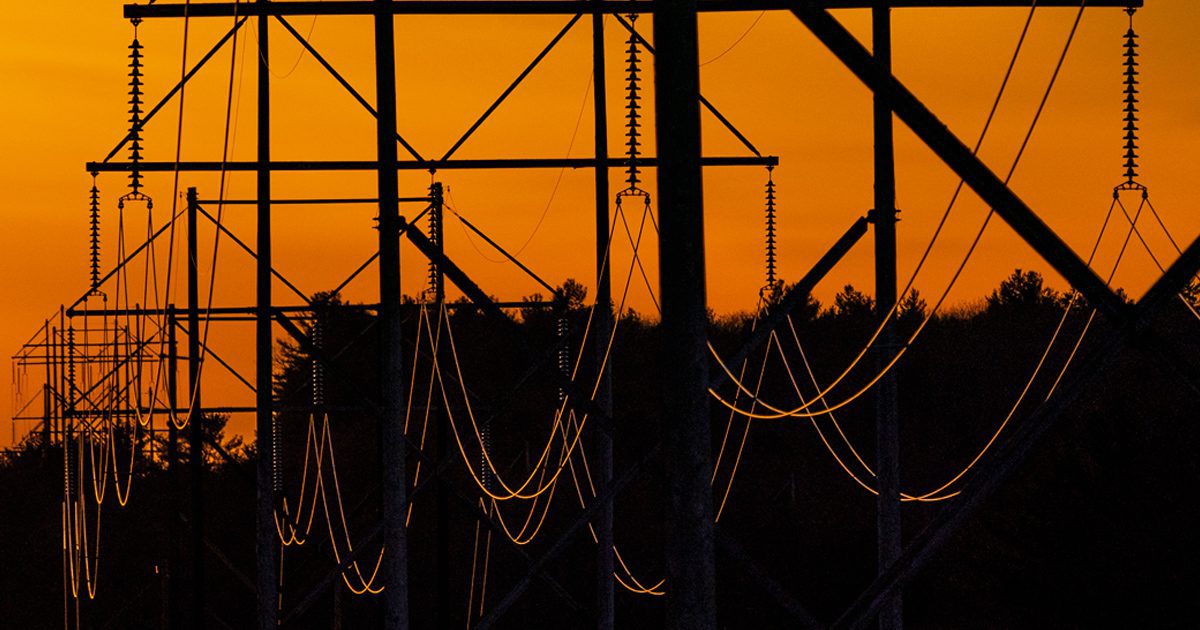Every household in Maine could have about 21 one-pound lobsters — or six one-pound lobsters and a pair of chamois-lined Bean Boots — for the price of a residential electricity ripoff that’s now in its seventh year.
The ripoff isn’t the product of monopoly utility control, but rather a competitive market for electricity supply that emerged for residential customers in 2012.
Since then, Maine’s residential power customers could have saved $132.5 million if they’d changed nothing with their power supply and taken the default service price, according to a Maine Center for Public Interest Reporting analysis of annual reports filed with the U.S. Energy Information Administration.
It has not been reported that the sum rose another $20 million in 2018, according to federal statistics released in October.
The price retail suppliers have charged over the standard offer is even higher when estimated using state power consumption data, which groups usage by homes and small businesses. The ripoff has little to do with the barrage of attention on Central Maine Power Co.’s billing system, which the public advocate says continues to issue incorrect bills to thousands of customers.
By comparison, the amount residential customers have lost to private electricity sellers could have paid for all of CMP’s billing system, twice.
Sen. David Woodsome, R-York, has sponsored a bill on behalf of Public Advocate Barry Hobbins to eliminate the retail competitive electricity market altogether.
“I don’t necessarily agree with completely getting rid of the competitive providers,” Woodsome said. “I do think there’s been a lot of problems with these companies.”
While customers don’t have a choice of who delivers their power — CMP or Emera, in most cases — they can elect to pick their electricity supplier from a pool of retail power companies, called “competitive electricity providers.” Maine separated utilities from power generators in 2000.
Woodsome said that he has heard from constituents who are confused about who exactly is responsible for their power bill going up. On any of the bills, it is CMP or Emera’s name at the top.
“CMP has enough issues without being blamed for something they’re not responsible for,” Woodsome said.
Unscrupulous retail electricity salespeople have also used animosity toward the utilities to their advantage, marketing their product as a way to reject the big utilities. But that is misleading, as CMP or Emera do not supply standard offer power.
Larger power customers — large manufacturers, such as paper mills — have found ways to save money on electricity costs in that system. But residential customers, by and large, have not.
In creating the competitive market, regulators preserved a default option, called the standard offer, for customers who don’t want to shop around for a power supplier.
That standard offer is what most customers receive. But after starting in 2012, competitive suppliers by 2013 had captured almost one-third of the residential market, peaking at about 221,000 customers. That number has dropped dramatically as retail supplier prices have remained higher than the standard offer.
The group of retail suppliers was led by Electricity Maine, founded in 2011 by two serial entrepreneurs in Auburn, Emile Clavet and Kevin Dean.
The company and its founders were the target of a class-action lawsuit, alleging the company deceived customers into higher-cost power plans over multiple years. The case is nearing a settlement, according to court filings.
The pair had been silent about the amount their Maine-based enterprise extracted from residential customers, until this year when two lawsuits put them on the record.
Signing up customers becomes a ‘futile effort’
Electricity Maine stands out for the amount of money it has charged customers over the standard offer — $102 million from 2012 to 2018.
It didn’t start that way. Electricity Maine saved its customers about $3.3 million in 2012, its first full year, according to analysis of federal reports. The savings was key to its early enrollment efforts.
“Just grab your power bill,” one of the company’s 2013 radio ads stated. “If on page 2 it says ‘standard offer,’ you’re paying too much.”
By that point, the company had been beating that drum for two years. In 2011, Clavet made a big promise that he and Dean did not keep:
We will always beat the standard offer. You’ll never, ever pay more than the standard offer, or we won’t be back.
In a July deposition, Clavet provided new detail about what happened in 2014, when the company’s fate started to turn.
“The way that [regulators] procure standard offer changed so we were competing with a different product,” Clavet said. “We would compare ourselves to standard offer for different reasons at different times because standard offer was evolving and changing continuously.”
Regulatory records show how the company pivoted to new marketing tactics, emphasizing being a local, Auburn-based company that supported area nonprofits.
They quietly re-enrolled existing customers at higher rates, sending renewal notification emails that might end up in a spam folder. Internal records obtained in a class-action lawsuit against Electricity Maine and its founders showed about half of the company’s customers never opened their emailed renewal notices.
The re-enrollments would not turn the tide, according to Dean’s testimony defending a lawsuit from Clavet. Dean testified that “the power companies had losses of over $14,000,000 and were in trouble” in 2015.
Meanwhile, supplier Dead River Co., which had a base of existing home heating customers, saw where electricity prices were headed. Dead River did what Clavet said Electricity Maine would do, writing to customers:
In October 2012, we entered the electricity supply business to offer our customers an electric thermal electricity supply rate that was less than the Standard Offer — saving you approximately 6% on your electricity supply bill.
Since then, the escalating cost of natural gas has contributed to the increased cost of electricity. As a result, many electricity supply providers increased their rates to levels above the Standard Offer, costing consumers more on their energy bills. Dead River Company upheld its promise to offer you savings by keeping our rates below the Standard Offer.
While Dead River ended its service in December 2014, Electricity Maine kept operating.
In the class-action lawsuit, Clavet rejected reports comparing his company’s prices to the standard offer. He said a report issued by the Maine Public Utilities Commission, validating methods for calculating how much retail suppliers charged customers over the standard offer, provided “an incomplete picture.”
“I don’t think it’s a valuable report,” Clavet said in a July deposition.
Clavet and retail supply industry groups have argued that their offerings are not comparable to the standard offer because they can include other attributes, like power generated from renewable suppliers or pricing that varies based on the time of day, a strategy for balancing out power demand in an area.
Clavet did not respond to multiple requests for comment on his testimony and how he would advise customers to make the comparison between the standard offer and retail supply plans.
In 2016, Clavet said he knew that prices alone were providing he and Dean significant headwinds in signing up new customers.
“Prices were coming down, so it was more difficult to maintain a margin because… the current market had lower rates,” Clavet said of the time he and Dean were seeking to sell Electricity Maine’s parent company Provider Power, which also operates in New Hampshire and Massachusetts.
Within that margin, there were millions on the line for Dean and Clavet. The terms of their sale to Spark contained an earnout, an arrangement to incentivize Clavet and Dean to continue to build the company’s customer base as the sale was pending.
In Clavet’s words from the witness stand, that earnout depended on keeping “so many customers with a certain profit margin.”
That “certain profit margin” was at least 34% higher than the going power rate of 6.7 cents, according to sale documents.
“It was a little bit discouraging because, you know, to get anywhere really with it, you had to sell a lot of electricity at a pretty strong price compared to what the current market was to a fair number of customers using, you know, a method, which for us was mostly direct mail that yielded very few results,” Clavet said.
He knew the company’s higher prices would make the $2 million marketing push funded by Spark a “futile effort,” he said, because they could not grow much beyond having one out of every four homes in the state signed up.
“Spark had given us a budget to go out and market and try to get those new incremental customers, but it was kidn of like banging your head against the wall,” Clavet said.
After $1 million was spent, Clavet said he suggested to Spark that they give him and Dean $500,000 “and [Spark] can keep the other half because this isn’t going to work,” Clavet said.
Spark didn’t accept the offer.
During that time, Clavet claimed Dean “was busy chasing new, individual electricity customers in an effort to hit Spark’s milestones,” an effort he added “did not work, for reasons that were apparent to Kevin and Emile heading into the effort.” Clavet said he was chasing down big clients during that time, including the AFL-CIO. In 2017, the company inked a deal to supply power to state government.
At the time of Electricity Maine’s sale, Spark estimated it would cost about $80 to acquire a new customer. Suppliers like Ambit Energy have defrayed that cost using a multi-level marketing approach, where they give customers benefits for turning around and selling power plans to their friends and family, primarily over social media.
Since Dead River exited the market, Electricity Maine’s average residential price has followed Dead River’s forecast: it’s been higher than the standard offer each year, based on its year-end revenue and power supplied.
In 2015, its price was 66% higher; last year, it was 44% higher.
As the total kept climbing in 2017, Maine’s legislature passed a new consumer protection law and the number of customers getting power from retail suppliers continued to fall.
Earlier this year, the state advocate for electricity customers — called the Public Advocate — recommended a one-year suspension and a $1 million fine against Electricity Maine, with a decision still pending from the PUC.
How we made the comparison in price
Every year, electricity suppliers report their revenue and total power sales.
From the two annual numbers, broken into groups based on customer size, one can calculate the rate that the supplier’s customers paid, on average.
The rate summarizes all of the complicated activity that might be going on within that number, for customers that signed up in the middle of a year or had their rates change from one month to the next, called variable plans.
Those annual summary reports also break out how much power was supplied in each of Maine’s two regional power grids — most of the state is connected to the ISO-New England grid. Aroostook County and parts of Washington County are part of a separate regional grid system.
The annual summaries for each supplier can then be compared with the going standard offer rates in each different grid system, like so:
This doesn’t consider how retail supply plans can vary from the standard offer (though, they rarely do).
For instance, they can have “clean power” attributes, whether the contract is actually backed by a renewable energy project or whether the premium just pays for the cost of renewable energy credits. The PUC report indicated that Clearview Electric was the only provider to only offer such plans through 2016.
For other suppliers, who may offer one such renewable plan, it’s not clear what share of customers have signed up. Public reporting doesn’t show that and industry groups have declined to disclose just how many of their customers choose such plans, as opposed to customers who are getting supply that has no distinction from the standard offer supply.
For a deeper look behind this analysis, view the Github repository for this project to see raw files, outputs and the Tableau Prep workflow used to produce the analysis files.







